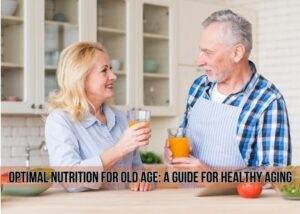Parkinson’s Disease
Parkinson's Disease
Parkinson’s disease (PD) is a progressive neurodegenerative disorder that affects movement. It develops gradually over time and is characterized by the loss of dopamine-producing neurons in a region of the brain called the substantia nigra. Dopamine is a neurotransmitter that plays a key role in controlling movement and coordination.
Need to consult?
Quickly Book an Appointment.

Symptoms & Causes
Symptoms:
- Tremor: Involuntary shaking, usually starting in one hand and often occurring when the limb is at rest.
- Bradykinesia: Slowness of movement, making simple tasks difficult and time-consuming.
- Rigidity: Stiffness or inflexibility of the limbs or trunk, causing decreased range of motion.
- Postural instability: Impaired balance and coordination, leading to difficulty in maintaining an upright posture and an increased risk of falls.
- Other symptoms: These may include freezing of gait, stooped posture, soft or slurred speech, and changes in handwriting (micrographia). Non-motor symptoms such as cognitive impairment, depression, anxiety, sleep disturbances, and autonomic dysfunction (e.g., constipation, urinary problems) can also occur.
Causes:
The exact cause of Parkinson’s disease is not fully understood, but it likely involves a combination of genetic and environmental factors. Some genetic mutations have been linked to familial forms of the disease, while environmental factors such as exposure to certain toxins may also contribute to the development of PD.
- Genetic Factors: While most cases of Parkinson’s disease are sporadic (occurring without a clear family history), genetic factors do play a role, particularly in familial cases where there is a known family history of the disease. Several genes have been identified that are associated with an increased risk of Parkinson’s disease or are believed to contribute to its development
- Environmental Factors: Exposure to certain environmental toxins or chemicals may increase the risk of developing Parkinson’s disease.
- Oxidative Stress and Inflammation: Parkinson’s disease is associated with increased oxidative stress and inflammation in the brain, which may contribute to the degeneration of dopamine-producing neurons. Oxidative stress occurs when there is an imbalance between the production of harmful reactive oxygen species and the body’s ability to neutralize them with antioxidants. Chronic inflammation in the brain may also contribute to neuronal damage and cell death.
- Mitochondrial Dysfunction: Mitochondria are the energy-producing organelles within cells, and dysfunction in mitochondrial function has been implicated in Parkinson’s disease. Impaired mitochondrial function can lead to energy depletion, increased oxidative stress, and impaired cellular metabolism, all of which may contribute to neuronal degeneration.
- Alpha-Synuclein Aggregation: One of the hallmarks of Parkinson’s disease is the accumulation of abnormal protein aggregates called Lewy bodies, primarily composed of alpha-synuclein, within neurons. The aggregation of alpha-synuclein is believed to play a central role in the pathogenesis of PD, although the exact mechanisms by which these aggregates contribute to neurodegeneration are not fully understood.
Diagnosis:
Diagnosis is primarily based on clinical evaluation, including a detailed medical history and neurological examination. There are currently no definitive diagnostic tests for Parkinson’s disease, but brain imaging techniques such as MRI or CT scan may be used to support the diagnosis and rule out other conditions with similar symptoms.
Risk factors:
Parkinson’s disease (PD) is a complex disorder with multifactorial origins. While the exact cause of Parkinson’s disease remains unclear, several risk factors have been identified that may increase an individual’s likelihood of developing the condition.
- Age: Parkinson’s disease most commonly affects individuals over the age of 60, and the risk of developing PD increases with age. However, it can also occur in younger adults, known as early-onset Parkinson’s disease.
- Genetics: While most cases of Parkinson’s disease are sporadic, certain genetic factors can increase the risk of developing the disease. Individuals with a family history of Parkinson’s disease are at a slightly higher risk of developing the condition themselves.
- Gender: Men are slightly more likely to develop Parkinson’s disease than women, although the reasons for this gender difference are not fully understood.
- Environmental Exposures: Exposure to certain environmental toxins or chemicals may increase the risk of Parkinson’s disease. Pesticides, herbicides, solvents, heavy metals, and industrial chemicals have been implicated as potential risk factors for PD. However, the specific environmental factors and their mechanisms of action in Parkinson’s disease are still under investigation.
- Head Trauma: Traumatic brain injury, particularly repeated head injuries or concussions, has been associated with an increased risk of Parkinson’s disease later in life. The exact relationship between head trauma and Parkinson’s disease is complex and requires further research.
- Rural Living: Some studies have suggested that individuals living in rural areas or agricultural communities may have a higher risk of developing Parkinson’s disease, possibly due to increased exposure to pesticides and other environmental toxins used in farming.
- Smoking and Caffeine Consumption: Interestingly, research has shown that individuals who smoke cigarettes or consume caffeine may have a lower risk of developing Parkinson’s disease compared to non-smokers and non-coffee drinkers
Complications
Certainly, Parkinson’s disease (PD) can lead to various complications as it progresses. Here are some common complications associated with Parkinson’s disease:
Motor Complications:
- Motor Fluctuations: Over time, individuals with PD may experience fluctuations in their response to medications, leading to periods of improved mobility (on periods) alternating with periods of worsened symptoms (off periods).
- Dyskinesias: These are involuntary, abnormal movements that can occur as a side effect of long-term dopaminergic therapy, particularly levodopa.
- Freezing of Gait: Some individuals may experience episodes where they feel as if their feet are glued to the ground, making it difficult to initiate or maintain walking.
Non-Motor Complications:
- Cognitive Impairment: Many people with Parkinson’s disease develop cognitive changes, ranging from mild cognitive impairment to dementia. Symptoms may include memory difficulties, slowed thinking, and executive dysfunction.
- Psychiatric Symptoms: Depression, anxiety, apathy, and hallucinations are common psychiatric symptoms in Parkinson’s disease.
- Sleep Disturbances: Parkinson’s disease can disrupt sleep patterns, leading to insomnia, excessive daytime sleepiness, restless legs syndrome, and REM sleep behavior disorder.
- Autonomic Dysfunction: Dysfunction of the autonomic nervous system can lead to symptoms such as orthostatic hypotension (low blood pressure upon standing), constipation, urinary problems, and sexual dysfunction.
- Speech and Swallowing Difficulties: Parkinson’s disease can affect the muscles involved in speech and swallowing, leading to soft or slurred speech (dysarthria) and difficulty swallowing (dysphagia), which can increase the risk of aspiration pneumonia.
- Loss of Sense of Smell: Many individuals with Parkinson’s disease experience a reduced sense of smell (hyposmia) or complete loss of smell (anosmia).
- Mobility and Balance Issues: As Parkinson’s disease progresses, individuals may experience worsening balance, postural instability, and an increased risk of falls, which can result in injuries such as fractures or head trauma.
- Medication Side Effects: Some medications used to treat Parkinson’s disease can cause side effects such as nausea, hallucinations, confusion, and impulse control disorders.
- Social and Economic Impact: Parkinson’s disease can have a significant impact on a person’s social life, relationships, and ability to work. Caregiver burden and financial strain can also be significant challenges for both patients and their families.
Prevention
- Regular Exercise: Engaging in regular physical activity, such as walking, swimming, or cycling, may help reduce the risk of Parkinson’s disease. Exercise has been shown to improve motor function, balance, and mobility in people with Parkinson’s disease and may also have neuro-protective effects.
- Healthy Diet: Eating a balanced diet rich in fruits, vegetables, whole grains, lean protein, and healthy fats may help support brain health and reduce the risk of neurodegenerative diseases like Parkinson’s. Some studies suggest that diets high in antioxidants and omega-3 fatty acids may be particularly beneficial.
- Supplements:
- Vitamin D: Low levels of vitamin D have been associated with a higher risk of Parkinson’s disease. Some research suggests that maintaining adequate levels of vitamin D may help manage symptoms.
- Omega-3 fatty acids: Found in fish oil supplements, omega-3 fatty acids have anti-inflammatory properties and may support brain health. Some studies suggest they could have a beneficial effect on Parkinson’s symptoms, but more research is needed.
- Vitamin E: Antioxidant properties of vitamin E may help protect cells from damage caused by Parkinson’s disease. However, evidence for its effectiveness in managing symptoms is limited.
- B Vitamins: B vitamins are important for memory and coordination.
- Vitamin C: Vitamin C is an antioxidant that can help lower levels of reactive oxygen species (ROS), which people sometimes call free radicals. ROS are byproducts of certain bodily processes. High levels of ROS can lead to oxidative stress and pose a risk of cell damage and inflammation.
- Avoiding Toxins: Minimizing exposure to environmental toxins and pollutants, such as pesticides, herbicides, heavy metals, and solvents, may help reduce the risk of Parkinson’s disease. Protective measures may include using protective equipment when working with chemicals and following safety guidelines for handling potentially hazardous substances.
- Smoking Cessation: Smoking has been associated with an increased risk of Parkinson’s disease, so quitting smoking may help reduce the risk. Additionally, avoiding secondhand smoke exposure may also be beneficial.
- Moderate Alcohol Consumption: Some studies suggest that moderate alcohol consumption may be associated with a lower risk of Parkinson’s disease, although excessive alcohol intake can have negative effects on overall health.
- Brain Stimulation Activities: Engaging in mentally stimulating activities, such as reading, puzzles, learning new skills, and socializing, may help maintain cognitive function and reduce the risk of cognitive decline associated with aging and neurodegenerative diseases.
- Maintaining a Healthy Weight: Obesity and being overweight have been linked to an increased risk of Parkinson’s disease, so maintaining a healthy weight through diet and exercise may be beneficial.
Treatment
While there is no cure for Parkinson’s disease, various treatment options are available to help manage symptoms and improve quality of life:
- Medications: Dopaminergic drugs such as levodopa/carbidopa, dopamine agonists, MAO-B inhibitors, and COMT inhibitors can help replenish dopamine levels in the brain and alleviate motor symptoms.
- Deep brain stimulation (DBS): This surgical procedure involves implanting electrodes in specific areas of the brain and delivering electrical impulses to modulate abnormal brain activity and reduce symptoms.
- Physical therapy: Exercises targeting flexibility, strength, balance, and gait can help improve mobility and reduce the risk of falls.
- Speech therapy: Techniques to improve speech clarity and swallowing difficulties.
- Occupational therapy: Strategies to maintain independence in daily activities and manage hand dexterity issues.
Food & Wellness | Parkinson's disease Management Programme
At Food & Wellness, our Parkinson’s disease management program is designed to provide personalized support tailored to each individual’s needs. Our team of expert nutritionists customizes diet plans to slow down the progression of Parkinson’s and gradually improve overall health parameters over time.
We start by conducting detailed consultation about dietary and lifestyle habits, along with a scientific analysis of latest health report. This comprehensive approach ensures holistic management and treatment of Parkinson’s disease.
Our holistic approach advocates for and ensures that individuals living with Parkinson’s disease can maintain their health and quality of life throughout their lifetime. By addressing dietary and lifestyle factors, we aim to support individuals in managing their condition effectively and optimizing their overall well-being.
To know more on how to manage your Parkinson’s disease, subscribe to Foodnwellness blog today!
Additionally
A WhatsApp chat group is created after you opt for the plan and daily updates are taken from you and feedback or support provided as needed. One phone call is fixed every two weeks to discuss the progress on Zoom or Whatsapp.
- Parkinson’s disease: Hope through research. National Institute of Neurological Disorders and Stroke. https://www.ninds.nih.gov/Disorders/Patient-Caregiver-Education/Hope-Through-Research/Parkinsons-Disease-Hope-Through-Research. Accessed April 4, 2022.
- Dashtipour K, et al. Speech disorders in Parkinson’s disease: Pathophysiology, medical management and surgical approaches. Neurodegenerative Disease Management. 2018; doi:10.2217/nmt-2018-0021.
- Mehanna R, et al. Age cutoff for early-onset Parkinson’s disease: Recommendations from the International Parkinson and Movement Disorder Society task force on early-onset Parkinson’s disease. Movement Disorders Clinical Practice. 2022; doi:10.1002/mdc3.13523.
- Thomas A. Allscripts EPSi. Mayo Clinic. April 22, 2022.
- http://www.niehs.nih.gov/health/topics/conditions/parkinson
- parkinsonsresource.org
- https://www.mayoclinic.org/diseases-conditions/parkinsons-disease/symptoms-causes/syc-20376055
Let's get started with treating your condition...
At Food & Wellness we believe that every individual is different and needs special attention. We adapt our programme to your existing lifestyle and try not to change anything drastically so you can easily transition. Over a period of time we ensure results and help you restore your health.
Realted Articles

Nutrition Needs When You’re Over 65
Aging is a natural process, and our nutritional requirements also change as we age. The food and drinks one consumed at a younger age may not be ideal now. In other words, there will be a change in the nutritional intake as you age. Ensuring a healthy diet becomes paramount for both men and women

Optimal Nutrition for Old Age: A Guide for Healthy Aging
“The food you eat can be either the safest and most powerful form of medicine or the slowest form of poison.” – Ann Wigmore (Holistic Health Practitioner) As rightly pointed out, what we eat becomes super important for our health and well-being. So, we really need to focus on eating healthy stuff to stay in

Sleep Problems among the Elderly: Tips to Overcome it
Aging is one of the most natural things to happen to us. No matter how healthy or fit we are, we all will age. And as we grow older, we often find it difficult to do things that we have almost always taken for granted. Not being able to sleep properly is one such problem that is widely seen among the elderly. Among all other sleep disorders, the most common is insomnia, that has several medical and psychiatric repercussions.


